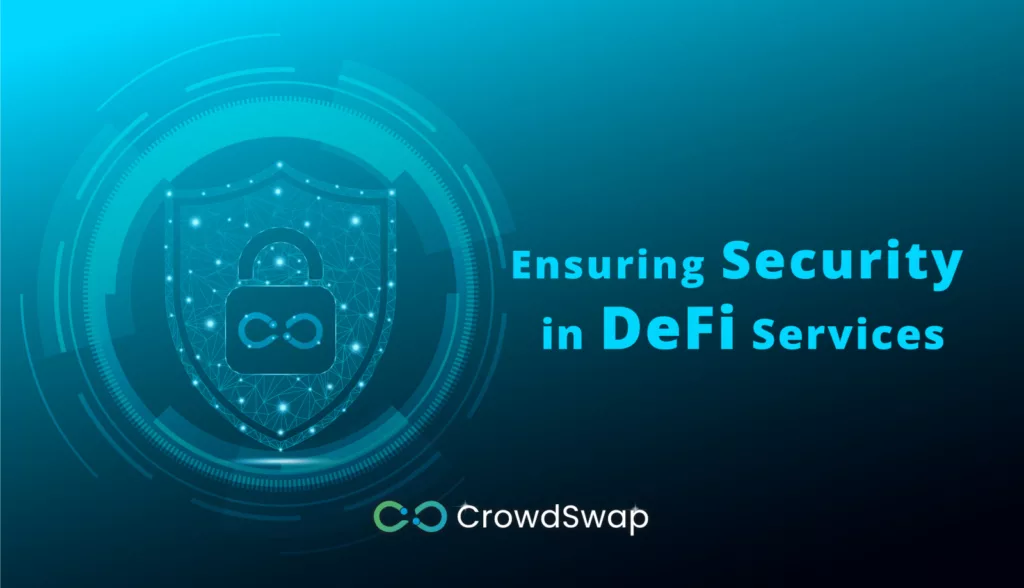In the world of decentralized finance (DeFi), the promise of financial freedom attracts many enthusiasts to its innovative platforms. Among them was Emily, drawn to DeFi with a mix of curiosity and excitement. She eagerly started her journey, looking to benefit from the opportunities promised by this new landscape.
One day, Emily found a new DeFi project. The platform promised high returns, a user-friendly interface, and a supportive community. Excited by these possibilities, she invested a significant portion of her savings, hoping to make a good profit. However, she soon fell victim to a rug pull—a sudden and devastating event that shattered her trust in the decentralized world she had come to admire. Emily’s experience with the rug pull is a reminder that even in a world full of innovation and potential, dangers are always present.
As we navigate the world of DeFi services, it’s important not only to understand its potential but also to be careful and informed. This guide highlights 10 critical mistakes to avoid, ensuring your DeFi journey is both rewarding and safe.
Understanding the DeFi Landscape
As Emily’s experience demonstrated, navigating the world of DeFi services can be both thrilling and risky. DeFi has quickly become a groundbreaking movement, changing traditional financial systems through blockchain technology and offering unique opportunities for people like Emily who seek financial independence. However, it’s essential to recognize both the immense potential and the significant risks involved.
DeFi platforms allow users to lend, borrow, trade, and earn interest on their assets without relying on traditional banks. This opens up financial services to a broader audience, especially those who might not have access to conventional banking. The decentralized nature of these platforms means transactions can be faster, cheaper, and more transparent.
Learn More: What is DeFi? (All you need to know about Decentralized Finance)
Learn More: CeFi vs. DeFi, What is the difference?
Navigating the Challenges of DeFi
DeFi services’ decentralized nature means there are no middlemen, giving users direct control over their assets. While this offers freedom and control, it also presents challenges. Without a central authority, users must handle their own research, risk assessment, and security, making it hard to identify trustworthy projects and avoid scams.
The lack of regulation can make DeFi services a hotbed for scams and fraud. Technical issues, like bugs in smart contracts, can lead to significant financial losses. Additionally, the volatility of cryptocurrencies can affect the value of DeFi investments, so staying informed and cautious is crucial.
By understanding the DeFi landscape, including its benefits and risks, users can better navigate this complex world. Armed with knowledge and a careful approach, the potential for financial growth in DeFi services is significant, but so is the need for carefulness.
In the following sections, we’ll explore common mistakes and best security practices to help you navigate this space with confidence and care.
Common Crypto and DeFi User Mistakes and How to Avoid Them
Navigating the DeFi world can be both exciting and challenging. As Emily discovered, jumping into DeFi without proper guidance can lead to costly mistakes. Here are some common errors and how to avoid them.
1. Lack of Research and Due Diligence
One of the biggest mistakes is investing in a DeFi project without thorough research. Always check the project’s whitepaper, team members, and community feedback. Look for independent audits of the project’s smart contracts to ensure security and reliability.
2. Chasing Hype and FOMO
It’s easy to get caught up in the hype of trending projects. However, making investment decisions based on hype and fear of missing out (FOMO) can be disastrous. Focus on projects that align with your long-term investment goals and values.
3.Ignoring Security Measures
Neglecting basic security practices can leave your assets vulnerable. Always enable two-factor authentication (2FA), use hardware wallets, and maintain strong, unique passwords to protect your investments from hacking and phishing attacks.
4. Overlooking Regulation
The lack of regulation in DeFi can make it a breeding ground for scams. Be cautious and ensure you understand the regulatory environment of any DeFi project you consider.
5. Failing to Diversify
Don’t put all your funds into a single DeFi platform. Spread your investments across multiple services to reduce risk and protect against potential losses.
6. Starting Too Big
When exploring new platforms, start with a small investment. This allows you to test the waters and understand how the platform operates before committing more funds.
7. Ignoring Community Feedback
Engage with the community on forums and social media. A strong, active community is often a good indicator of a trustworthy project.
8. Neglecting Exit Strategies
Have clear exit strategies for your investments. Know how to withdraw your funds and understand the associated fees and processes.
9. Overlooking Smart Contract Risks
Smart contracts can have coding flaws. Ensure the projects you invest in have undergone thorough security audits to minimize risk.
10. Falling for Fake Tokens and Projects
Be aware of new tokens and projects. Hackers often create fake ones to trick users into investing their funds. Always verify the legitimacy of a project before investing.
Learn More: How to Invest in DeFi

Ensuring Security in DeFi Services
In the decentralized world of DeFi, securing your assets is crucial. Here are essential practices to safeguard your investments:
– Choose Established Platforms
Opt for platforms with a proven track record and strong community presence. Ensure they have undergone third-party audits to verify their security and reliability.
– Beware of Phishing Links
Avoid clicking on suspicious links or sharing sensitive information through unofficial channels. Always double-check URLs and use bookmarked links to access DeFi platforms.
– Secure Private Keys
Keep your private keys offline in a hardware wallet. Never share your private keys with anyone. Treat them as the keys to your financial safety.
– Use Two-Factor Authentication (2FA)
Enable 2FA to add an extra layer of security to your accounts. This ensures that even if someone gains access to your password, they cannot log in without the secondary authentication method.
– Regularly Update Software
Ensure that your wallet software and any other tools you use are always up-to-date. Updates often include important security patches that protect against new threats.
-Monitor Account Activity
Regularly check your account activity for any unauthorized transactions. Set up alerts if your platform allows it so you are immediately notified of any suspicious activity.
– Use Strong, Unique Passwords
Create strong, unique passwords for each of your accounts. Avoid using easily guessable passwords, and consider using a password manager to keep track of them.
– Educate Yourself Continuously
Stay informed about the latest security threats and best practices in the DeFi space. Join communities, follow reputable sources, and continuously educate yourself to stay ahead of potential risks.
Learn More: How to improve your DeFi wallet security?
By following these tips, you can greatly lower the risk of losing your assets to hacks or scams in DeFi. Staying alert and taking action on security is key to enjoying the benefits of DeFi while keeping your investments safe.
Endless Opportunities Await
Unlock endless possibilities with our feature-packed decentralized crypto exchange
Wrap-Up
Emily’s journey through DeFi highlights the importance of continuous learning and vigilance. After facing a rug pull, she committed to staying informed and cautious. Recognizing the fast-changing DeFi landscape, Emily immersed herself in research, community discussions, and expert insights. She learned to identify legitimate projects and strong security measures, becoming a beacon for others.
As DeFi evolves, Emily’s story reminds us that knowledge and adaptability are key to a secure and successful financial future. Embrace continuous learning and awareness to navigate DeFi’s dynamic possibilities and mitigate risks. Like Emily, you can move from uncertainty to empowerment in the world of DeFi.
Stay ahead in the DeFi services space by subscribing to the CrowdSwap newsletter for the latest updates and news.
FAQ
Who Controls DeFi?
DeFi platforms are managed through tokens that provide voting rights within a Decentralized Autonomous Organization (DAO). However, these tokens are often held by a small number of individuals, and they are rarely used for voting.
How to make money in DeFi?
To earn money in DeFi, you can participate in DeFi lending. Deposit your tokens into a lending platform for a set period, and in return, you’ll receive interest. Smart contracts handle the interest distribution, ensuring you receive earnings based on the amount of assets you have locked in.
What are the most common mistakes people make when using DeFi services?
Many users make the mistake of not doing enough research before investing in DeFi projects. This includes failing to read the project’s whitepaper, not checking the credentials of the team, and ignoring community feedback. Additionally, some users chase hype and make impulsive investments based on fear of missing out (FOMO) rather than long-term goals. Ignoring security measures, such as not using two-factor authentication or hardware wallets, is another common error.













